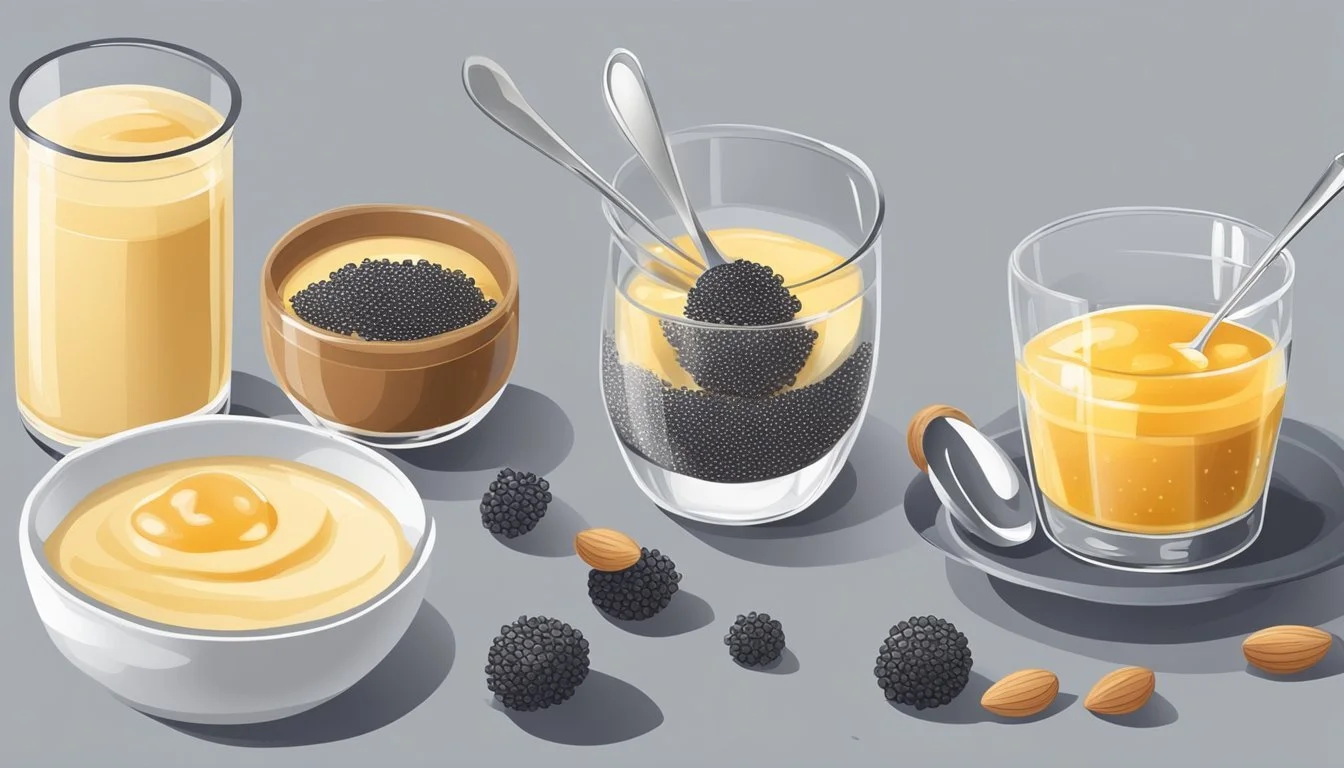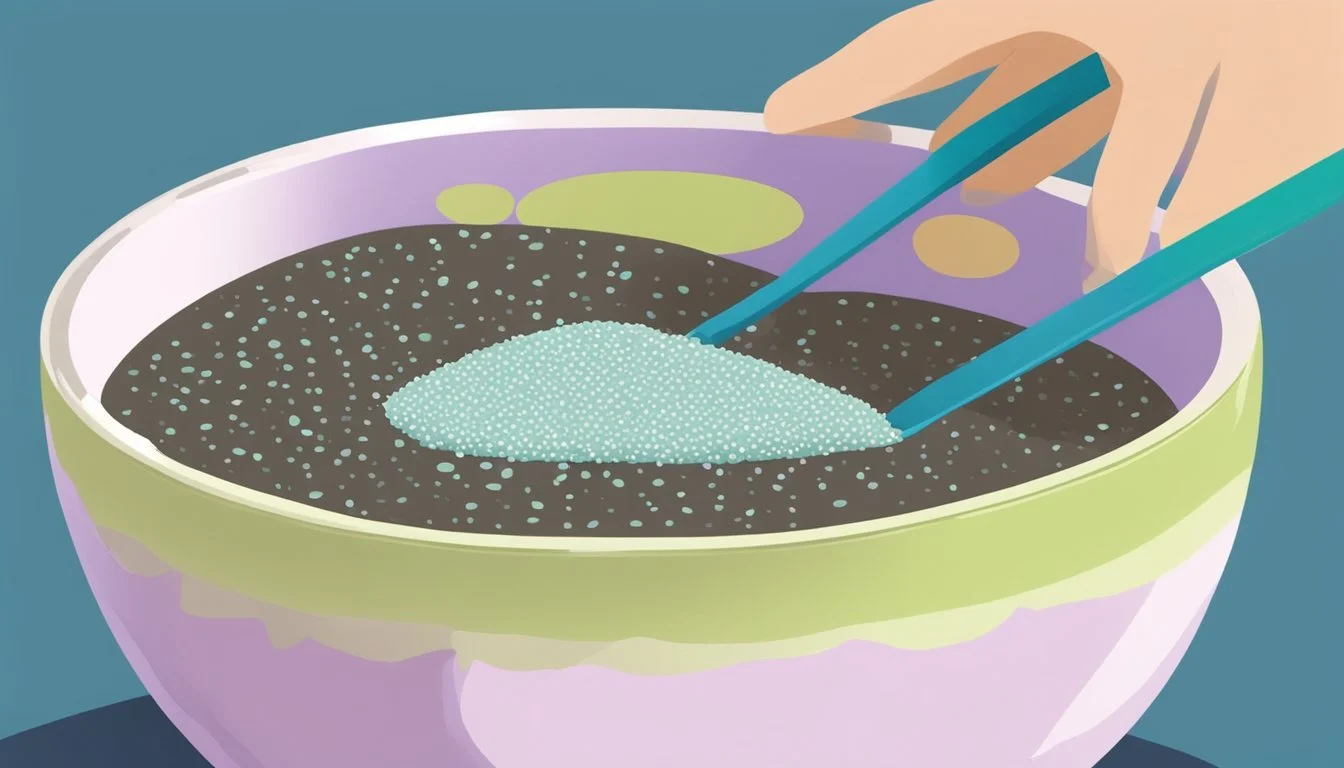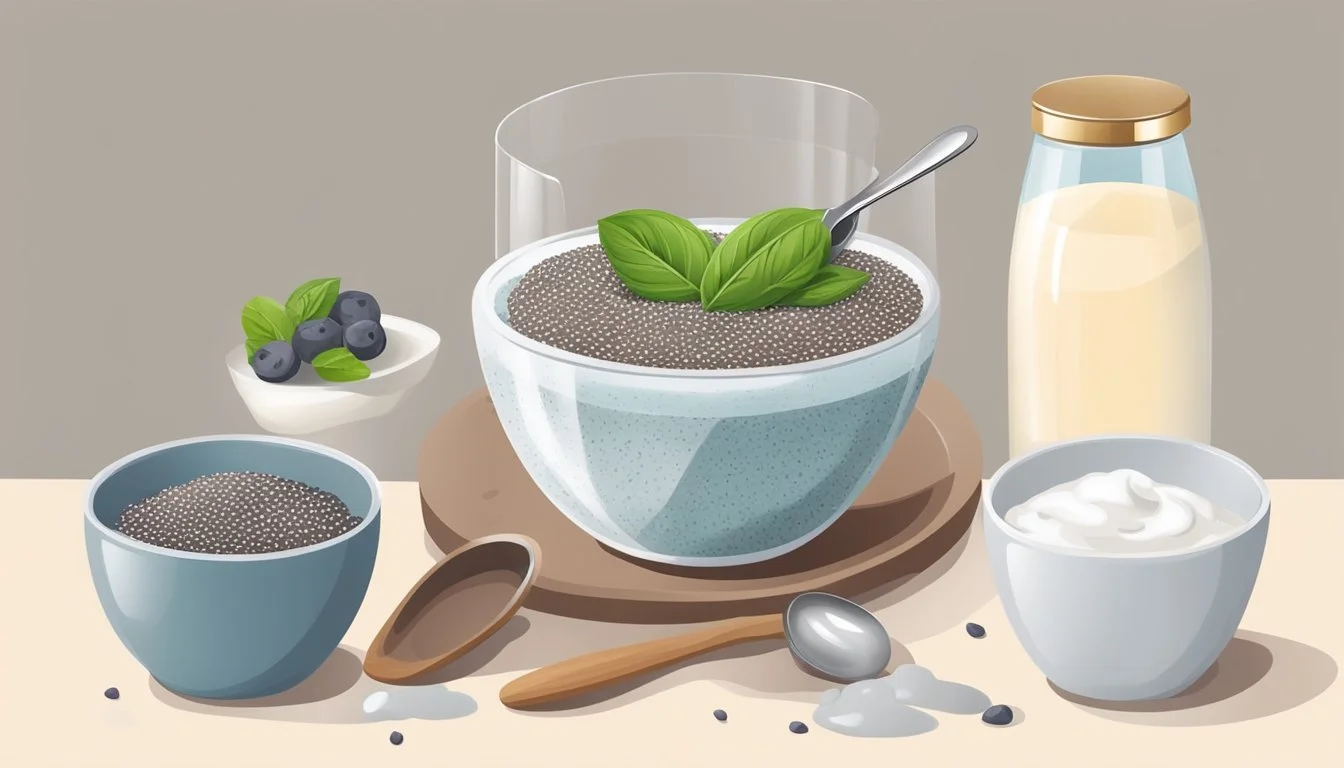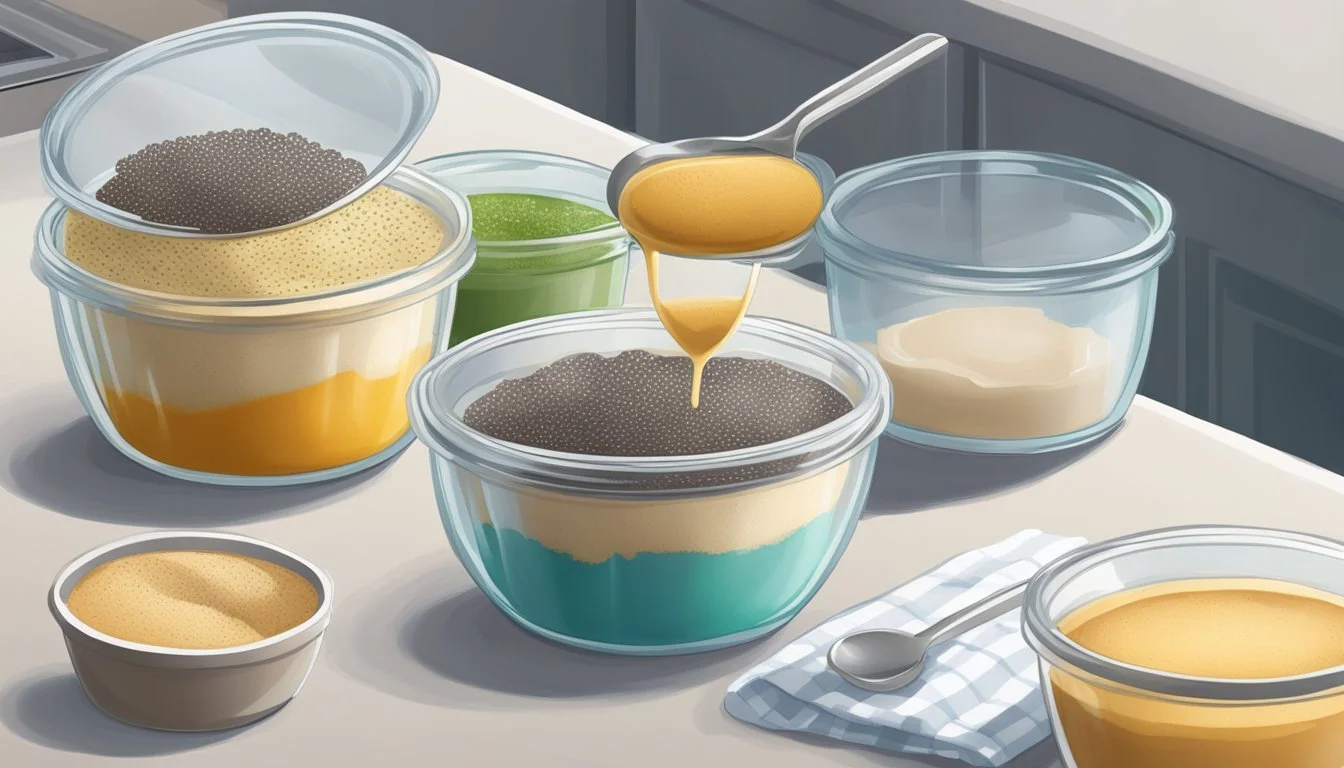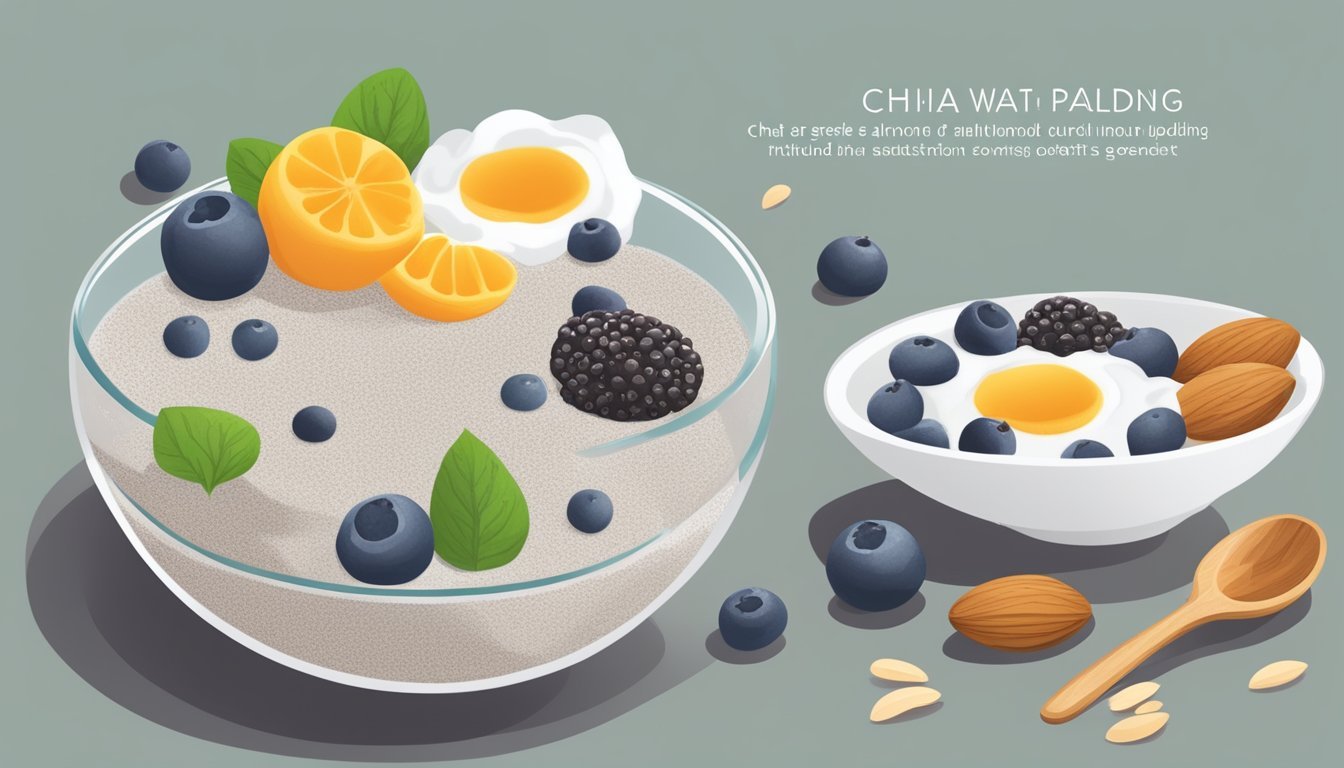Fixing Watery Chia Pudding
Mastering Thickening Techniques for Perfect Consistency
Chia pudding has emerged as a popular healthy breakfast and dessert option, praised for its rich nutritional profile and versatile texture. However, a common issue many face is ending up with a watery consistency that detracts from the desired creamy and thick texture that is characteristic of a perfect chia pudding. Achieving the ideal texture is crucial, as it not only impacts the mouthfeel but also the overall satisfaction and presentation of the dish.
The key to fixing watery chia pudding lies in understanding the balance between the chia seeds and the liquid base, be it milk, almond milk, or any alternative. Chia seeds have the unique ability to absorb up to twelve times their weight in liquid, which is essential for forming the gel-like consistency that thickens the pudding. Adjustments to the seed-to-liquid ratio, stirring frequency, and setting time are often necessary steps to ensure the pudding thickens adequately.
Crafting the perfect chia pudding texture also involves consideration of additional factors such as the age of chia seeds, as fresher seeds tend to have better thickening power, and the inclusion of mix-ins that can affect the pudding's consistency. By paying attention to these details and employing a few thickening techniques, one can transform a watery mixture into a lusciously thick and creamy chia pudding that stands as a testament to healthy and indulgent eating.
Understanding Chia Seeds
Chia seeds are popular for their health benefits and unique properties that contribute to the texture of recipes like chia pudding. This section delves into their nutritional content and their ability to absorb water.
Nutritional Profile
Chia seeds are a nutritional powerhouse, offering a dense profile of vitamins, minerals, and essential fatty acids. They are an excellent source of omega-3 fatty acids, which are crucial for brain health. In terms of minerals, chia seeds provide significant amounts of calcium, magnesium, iron, and potassium. They are also rich in fiber and protein, making them a filling addition to any diet.
Chia Seed Nutritional Breakdown per Ounce (Approximately 2 Tablespoons):
Fiber: 11 grams
Protein: 4 grams
Omega-3 fatty acids: 5 grams
Calcium: 18% of the RDI
Magnesium: 30% of the RDI
Iron: 12% of the RDI
Potassium: 1% of the RDI
Chia seeds also contain a variety of antioxidants, which can help protect the body from oxidative stress, and vitamins such as Vitamin A and Vitamin C.
The Science of Chia Seeds and Water Absorption
The unique feature of chia seeds is their ability to absorb water and other liquids, swelling to form a gel-like substance. This property is thanks to the high soluble fiber content in the seeds. When mixed with water or any liquid, chia seeds can absorb approximately 9 to 12 times their weight, which is a prime factor for thickening puddings and other similar dishes.
There are two main varieties available in the market: black chia seeds and white chia seeds. While they are nutritionally similar, some prefer white chia seeds for lighter-colored recipes for aesthetic reasons. Regardless of color, it is important to use fresh chia seeds to ensure the best water absorption and overall quality of your chia-based dishes.
Prepping Chia Pudding
Creating the perfect chia pudding hinges on selecting quality ingredients, mastering mixing techniques, and achieving the ideal ratio for a thick, satisfying texture.
Choosing the Right Ingredients
The foundation of chia pudding is, unsurprisingly, chia seeds. Use fresh chia seeds for optimal thickening power. Then, choose your liquid component; this can range from dairy milk to non-dairy alternatives such as almond, coconut, oat, soy, or cashew milk. These choices will not only affect taste but also the pudding's consistency. For sweetness, options like maple syrup, honey, and vanilla extract are popular for their natural flavors and ability to blend well.
Mixing Techniques
Careful mixing is crucial. Start by combining the liquid with your chosen sweeteners until they are well integrated. Next, add the chia seeds. Use a whisk or fork to mix thoroughly, ensuring there are no clumps. Some recipes suggest an initial mix, followed by brief, periodic stirring within the first 20 minutes to help distribute the seeds evenly.
Ratio and Consistency Adjustments
The ratio of liquid to chia seeds greatly influences the final consistency. A general guideline is 1/4 cup of chia seeds to every 1 cup of liquid for a creamy and thick texture. After mixing, let the pudding rest in a mason jar or any container with a lid in the refrigerator. For a firmer texture, the mixture should sit for at least 4 hours or, ideally, overnight. If adjustments are needed, add more chia seeds to thicken or more liquid to loosen the consistency.
Solving Watery Chia Pudding
When crafting chia pudding, the texture is paramount. Achieving the ideal creaminess hinges on precise ingredient ratios and avoiding common preparation errors.
Common Mistakes to Avoid
Incorrect Seed-to-Liquid Ratio: The basis of chia pudding lies in the seed-to-liquid ratio. As a rule of thumb, a ratio that often works well is 1/4 cup of chia seeds per 1 1/2 cups of liquid. Deviating from this ratio can result in chia pudding that's too thin or overly thick.
Failing to Mix Properly: Chia seeds have a gelatinous property that thickens the pudding, but they can clump together if not mixed thoroughly. Stirring the mixture well when preparing and after 15 minutes of refrigeration ensures even saturation and a smooth texture.
Using Old Chia Seeds: Freshness of chia seeds can significantly impact their ability to swell and thicken. Because they are high in fiber and develop a gel-like coating upon absorption of liquid, their thickening quality diminishes if they are stale. Always use fresh chia seeds for the best results.
Inadequate Refrigeration Time: Chia seeds need time to fully absorb the liquid and thicken the pudding. Typically, a minimum of 2 hours is required, but letting it sit overnight is most beneficial for a set pudding.
Effective Thickening Techniques
Adjusting the Seed Ratio: If the initial mixture is too watery, incrementally increase the amount of chia seeds. Allow each addition ample time to swell, which may take up to 30 minutes.
Utilize Thickening Agents: For puddings that require extra help, incorporating a small quantity of a thickening agent, like cornstarch or flour, can help. This should be done by creating a slurry with equal parts cold water and the chosen thickener, then combining it with the pudding and cooking the mixture slightly to activate the thickening power.
Ensure Even Hydration: To avoid lumps and ensure an even texture, one can stir the mixture several times during the initial refrigeration period. This promotes uniform gelatinization of chia seeds.
By properly understanding the properties of chia seeds, paying attention to the seed-to-liquid ratio, and mixing thoroughly, one can avoid the common pitfalls that result in watery chia pudding. In instances where the pudding is still too thin, employing thickening techniques can rescue the texture, resulting in a delicious and healthy dessert.
Enhancing Chia Pudding Flavors
Enhancing the flavors of chia pudding is straightforward with the inclusion of sweeteners and natural flavors, as well as a variety of fruit additions. These integrations not only enrich the taste but also augment the nutritional profile.
Sweeteners and Natural Flavors
The base of chia pudding carries a neutral flavor, allowing for a myriad of natural sweeteners to be introduced. Maple syrup and honey are popular choices that offer distinct, rich flavors as well as a smooth consistency. Vanilla extract adds a subtle, aromatic sweetness, and can be paired with cinnamon for a warm, spicy undertone. Here are specific pairings that work well:
Maple Syrup: Complements flavors like banana and cinnamon.
Honey: Pairs nicely with tart berries and peaches.
Vanilla Extract: Elevates the simplicity of the pudding, pairing well with most fruits.
Cinnamon: Offers a spicy contrast to sweet fruits such as apple or pear.
Adding cacao powder or cocoa powder can transform the pudding into a chocolate treat, which pairs nicely with raspberries or strawberries for contrast.
Fruit Additions and Combinations
Fruits can be incorporated to add natural sweetness, texture, and a pop of color. Certain fruits, because of their composition, also help thicken the pudding. Here is a range of options:
Berries: Raspberries, blueberries, and strawberries can be mixed in or used as a topping.
Tropical Fruits: Kiwi, banana, pineapple, and mango add a vibrant, tangy taste.
Stone Fruits: Peaches, when in season, offer a juicy sweetness.
One can combine these fruits to create interesting flavor profiles. For instance, a combination of blueberries and vanilla creates a classic flavor, while peaches and cinnamon yield a comforting, pie-like essence. Fresh fruit can be used both inside the pudding to infuse flavor or as a garnish for an added layer of texture.
Creative Toppings and Variations
Chia pudding can be transformed into a delightful treat or a nutritious breakfast with the addition of creative toppings and innovative recipe variations. In addition to enhancing the taste, these additions can provide extra nutritional benefits, such as additional fiber or omega-3s.
Popular Toppings
The charm of chia pudding lies in its versatility. Here's a curated list of toppings that can spruce up the humble base:
Nuts: Almonds, walnuts, and other nuts add crunch and healthy fats.
Fresh Fruit: Berries provide vibrant color and a punch of flavor.
Chocolate: Chocolate chips or shavings can introduce a rich, indulgent element.
Coconut: Shredded coconut offers a tropical flair and textural contrast.
Nut Butters: Almond butter or other nut butters bring in creaminess and depth.
Granola: For an extra crunch, granola is a go-to topping that pairs well with other ingredients.
Recipe Variations
By altering the base or infusing various flavors, one can craft exciting chia pudding variations:
Chocolate Chia Pudding: Incorporate cocoa powder for a chocolatey twist.
Raspberry Chia Pudding: Blend in fresh raspberries for a fruity and tart variation.
Banana Bread Chia Pudding: Mashed bananas and a sprinkle of cinnamon offer the warm flavors of banana bread.
Jam-Infused Chia Pudding: Layer with homemade or quality store-bought jam for a burst of sweetness.
With these toppings and variations, anyone can personalize their chia pudding to suit their taste preferences, making this dish as diverse as it is nutritious.
Dietary Considerations
When tailoring chia pudding to meet specific dietary needs, individuals can adjust the ingredients without sacrificing texture or flavor. The right thickening techniques and ingredient swaps ensure that the pudding remains a healthy dessert option.
Vegan and Dairy-Free Options
For those following a vegan or dairy-free diet, non-dairy milk is a staple swap for dairy milk. Using almond milk or coconut milk not only replaces dairy but can also contribute to the creaminess of the pudding. It's important to whisk the chia seeds with these milk alternatives until well incorporated.
Almond milk: A low-calorie option, rich in vitamin E.
Coconut milk: Creamier and higher in fat, ideal for a thicker pudding texture.
When sweetening chia pudding, maple syrup serves as an excellent vegan-friendly choice. Unlike honey, which is not vegan, maple syrup ensures the dessert remains plant-based.
Low-Calorie and Sugar-Free Substitutions
To reduce the calorie count, especially for those monitoring their intake, sugar-free sweeteners can replace traditional sugars. These sweeteners vary in taste and composition, so one should choose based on preference and dietary needs.
Stevia: A natural sweetener with zero calories, much sweeter than sugar.
Erythritol: Another sugar alcohol that has minimal impact on blood sugar levels.
Chia seeds themselves are naturally low in calories and high in fiber, making them an ideal component for health-conscious individuals. Their ability to absorb multiple times their weight in liquid makes them perfect for thickening pudding while keeping it nutritious.
Meal Prep and Storage Tips
Efficiency and freshness are vital when it comes to meal prepping chia pudding. Proper storage ensures that the texture and flavor are maintained, making chia pudding a reliable go-to for health-conscious individuals.
Making Chia Pudding in Advance
One can prepare chia pudding well in advance, as it's a simple process that requires minimal active time. To make chia pudding, mix chia seeds with a liquid such as milk or a milk alternative in a mason jar or any airtight container. This mixture should then be allowed to sit until the seeds fully gel and thicken, which typically takes about an hour. For best results, one can let the pudding sit overnight, akin to preparing overnight oats, which allows the seeds to fully swell and absorb the liquid, ensuring a creamy consistency.
Storage and Shelf Life
Once prepared, chia pudding should be stored in the refrigerator in an airtight container to maintain its freshness. This is crucial to prevent the pudding from absorbing other flavors and odors from the refrigerator. Chia pudding usually lasts up to 5 days when refrigerated, which makes it a great option for meal prep. For those who wish to preserve it longer, chia pudding can be stored in the freezer. It's best to freeze individual servings for convenience. To consume, one should thaw the pudding in the refrigerator overnight. Always check for signs of spoilage, such as an off smell or mold, before consuming, and use fresh chia seeds for the best quality pudding.
Nutritional Information and Health Benefits
Chia seeds are a powerhouse of nutrients, offering a blend of essential macronutrients and micronutrients that benefit health significantly. They are especially known for their high fiber and protein content alongside a wealth of important minerals and vitamins.
Macronutrients and Caloric Content
In terms of macronutrients, chia seeds provide a balanced composition that is primarily made up of fiber and protein. Typically, a serving of chia seeds, which is about 2 tablespoons (28 grams), contains:
Calories: Approximately 140
Protein: 4 grams
Fat: 9 grams, with a significant portion being omega-3 fatty acids
Carbohydrates: 12 grams; with 10 grams of this being dietary fiber
This high concentration of dietary fiber contributes to satiety, helping to control appetite and sustain weight management. The presence of omega-3 fatty acids, specifically alpha-linolenic acid (ALA), is key for cardiovascular health.
Micronutrients and Dietary Importance
The same serving size of chia seeds delivers an impressive array of micronutrients that are vital for maintaining various bodily functions:
Calcium: 18% of the RDI (Recommended Daily Intake)
Magnesium: 30% of the RDI
Iron: 12% of the RDI
Potassium: Essential for heart health, although in lesser amounts compared to other nutrients
In addition to these minerals, chia seeds contain antioxidants and a spectrum of B vitamins, contributing to overall health and prevention of chronic diseases. Their micronutrient profile supports strong bones, muscle function, and oxygen transport within the bloodstream.
The nutritional profile of chia seeds makes them not only a versatile ingredient for thickening puddings and creating healthful desserts but also a smart addition to a balanced diet.
Final Thoughts
Chia pudding has become a staple healthy dessert, frequently appearing on Instagram, due to its customizable nature and nutritional value. When prepared correctly, chia seeds transform into a delicious, gluten-free pudding with a gel-like consistency that is both satisfying and beneficial.
Tips for Perfecting Chia Pudding:
Chia Seeds: They are the foundation of chia pudding. Their ability to absorb liquids and form a gel ensures the pudding sets properly.
Consistency: For a firmer pudding, consider adding a small amount of gelatin as a thickener.
Flavoring: Enhance the taste with spices like cardamom or nutmeg to add depth to the dessert’s flavor profile.
Storing Techniques:
Pudding should always be stored in a resealable container to maintain freshness.
To allow for flavors to develop and a thick consistency to be achieved, a minimum of four hours in the refrigerator is suggested, though overnight is often preferred.
In summary, turning watery chia pudding into a luscious and healthy dessert is simple with the right techniques. The process is straightforward and when executed with attention to detail, the results can be a delightful treat that aligns well with a variety of dietary preferences.

